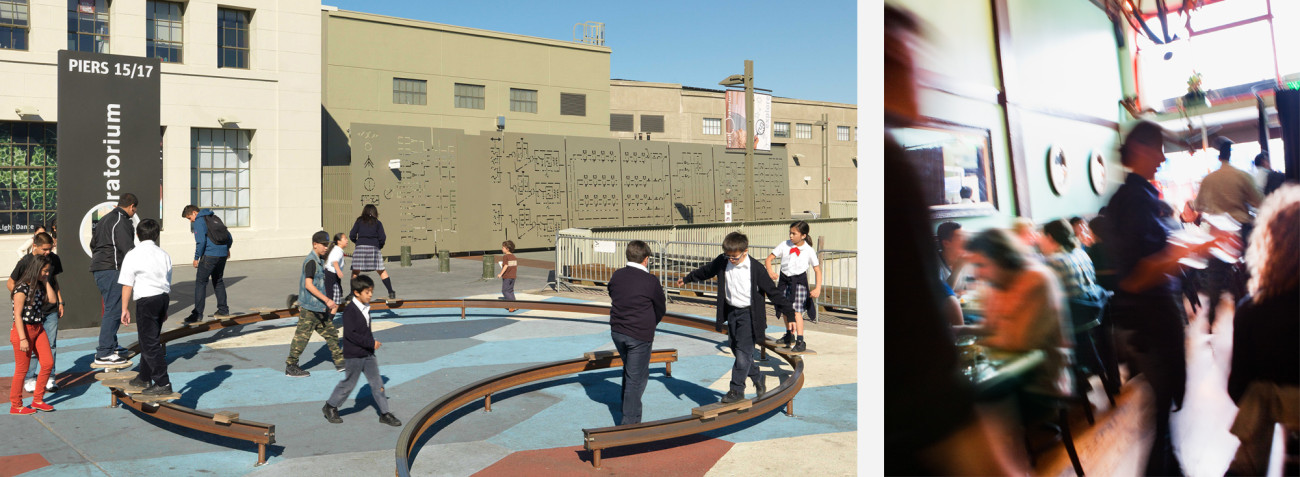The Treasure Island development team has increased the target number of housing units from 6,000 to 8,000, a move that could help attract stores and other services to the new neighborhood and make the staggeringly expensive project economically viable.
Kheay Loke, project manager for developer Wilson Meany Sullivan, said the bump up in density is being driven by public response to the project “notice of preparation” – part of the environmental review process – as well as calculations about the how many residents will be needed to support the variety of retail and services that will make the island a real neighborhood.
Wilson Meany Sullivan is the master developer of the project, along with Kenwood Investments and Lennar Urban. When fully built out over 15 years, the project is expected to cost $6 billion.
“The question being asked is: Would a denser project with more residents be more robust in that you have more people supporting the retail services and community services and transportation systems?” said Loke.
The proposed housing could bring the neighborhood density to 90 to 100 residents per acre – almost as many as North Beach and Chinatown, which has long been San Francisco’s densest area.
In addition to housing, the redevelopment of Treasure Island will include 420 hotel rooms, 235,000 square feet of retail, and 300 acres of open space. The housing and retail will be clustered within walking distance of a new ferry terminal to be built in the southeast corner of the island. The development team is hoping to win entitlements by the end of this year with infrastructure work starting in 2011. The first housing units, a mix of townhouses and towers, could be finished by 2014.
More residents on the island would help the project pencil economically as well. Building out the Treasure Island infrastructure – parks, streets, housing pads, and utilities – will cost between $1.3 billion and $1.5 billion, and the development team has already spent upwards of $35 million on planning. With the housing market still more than 30 percent off its 2007 highs, it’s unclear how much builders will be willing to pay for the housing “pads” that the master developers will start selling in 2013. In addition, as part a deal hammered out with the U.S. Navy, the development team is supposed to pay the Navy $50 million, with another $55 million coming from the city.
“To be able to share some of the infrastructure costs over a larger base would be a help and along the way we (would) create more affordable homes,” said Loke.
Loke stressed that the EIR is still being analyzed and that a conclusion on the right number of housing units has not been reached.
Increasing density is bound to generate opposition from those worried that it will worsen Bay Bridge traffic. The developers are attempting to counter that concern with a package of penalties and incentives that will encourage residents to travel by ferry or bus. Anyone buying a unit on the island will be required to buy a public transit pass, which will be part of their homeowner association dues. Parking will be unbundled from units, meaning that residents will have to buy parking spaces – another incentive not to drive. Finally, a congestion pricing system will charge a fee to anyone driving onto the island. The money from the parking and congestion pricing fees will help pay for the public transit.
“We believe our transportation plan has the nobs and levers so you can tweak it as you go along,” said Loke. “We’ll have the congestion pricing, ramp metering, carpooling and buses, ferries and shuttle buses. You give yourself all these tools in your tool kit so you can help control whether people drive or take public transportation,”
The development will take up one-quarter of the island, while three-quarters will be open space.
Tim Colen of the Housing Action Coalition said the group supports increasing the number of homes.
“It makes a supermarket viable,” he said. “It’s funny how central a grocery store is to a real neighborhood. And that is what we want to see out there – a real grocery store and a real neighborhood.”
Read the original story here.
